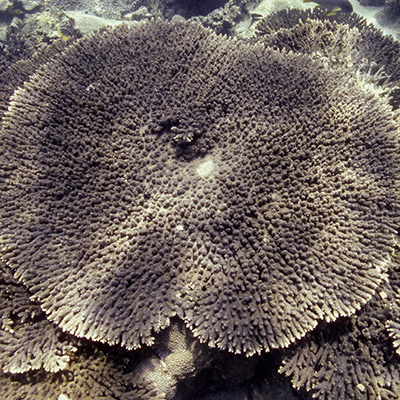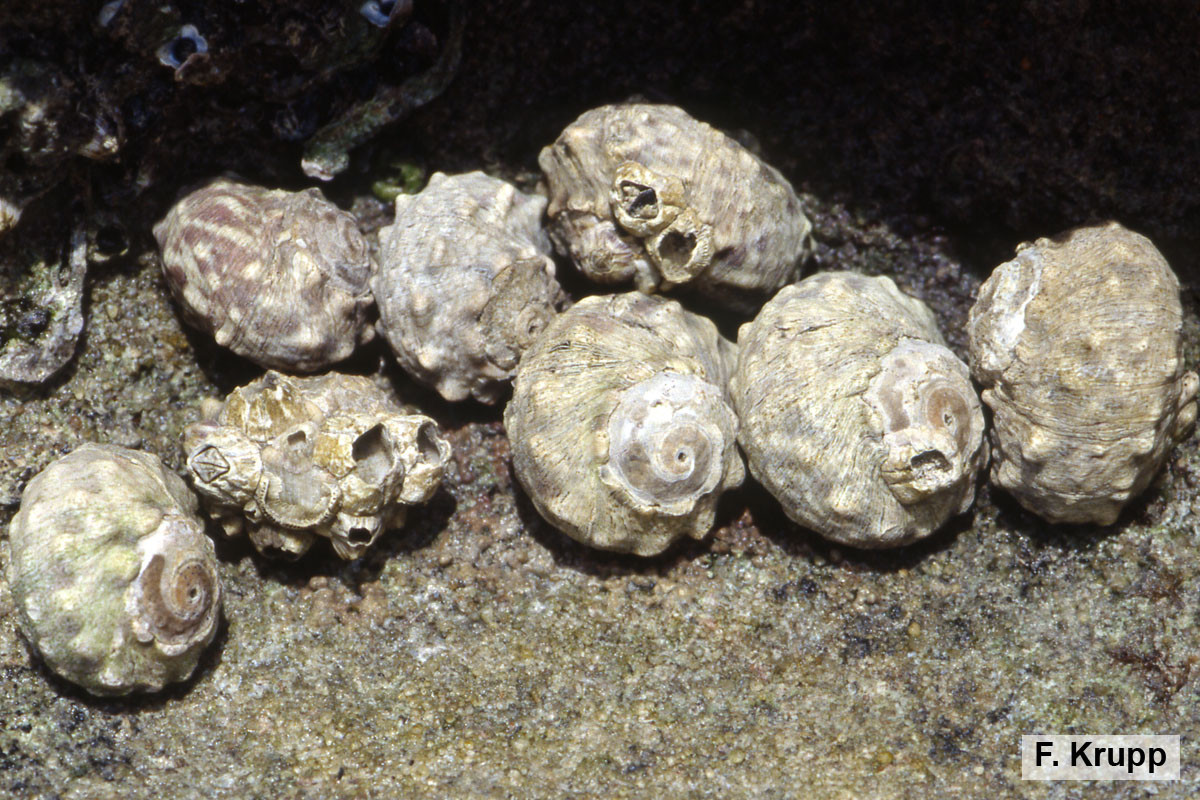Name: Lunella coronata
Common name: Coronate Moon Turban
Local name:
Scientific name: Lunella coronata
Classification: Class – snails and slugs; subclass Vetigastropoda; family – turban snails (Turbinidae)
Synonym: Also listed by its original name Turbo coronatus
Size: The shell length ranges from 2 cm to a maximum of 5.5 cm, but is commonly around 4 cm.
Habitat:
The Coronate Moon Turban is common found from the high water mark down to the mid-tide level on rocky shores, where it lives in pools, under stones, in crevices or among rocks and gravel. It does not discriminate between the shallow subtidal of back reef platforms and the intertidal zone, as long as it finds sufficient moist shelter under stable coral boulders when exposed periodically to the air. Most turban snails are herbivorous, grazing on small epibenthic algae and decaying or dead plant material. They are locally collected, especially the large individuals, both for their edible flesh and their nacreous (shimmering mother-of-pearl) shell, which is valued for shellcraft or carving ornaments.
Distribution:
The species is widespread in the Indo-West Pacific, from South Africa along the eastern African coast to the Red Sea, Arabian Sea and Arabian Gulf, eastward to Melanesia, north to southern Japan and south to Indonesia.
Conservation status:
Lunella coronata has not yet been assessed for the IUCN Red List of Threatened Species. It is sold in small numbers in fish markets, mainly to expatriate population
Description:
The shell of Lunella coronata has a depressed-turbinate shape with a diameter greater than the altitude. It is covered with an irregular spiral series of nodules and granules and conspicuous flattened, cup-like scales. The spire is depressed, dome-shaped with an apex that is frequently eroded. The shell contains 4 - 5 whorls, the last one being very large. The inside of the operculum is flat, its outside is convex. The color is pale to greenish, flecked with purplish-brown markings, often encrusted with light pink coralline algae. The operculum has a pale green center.








